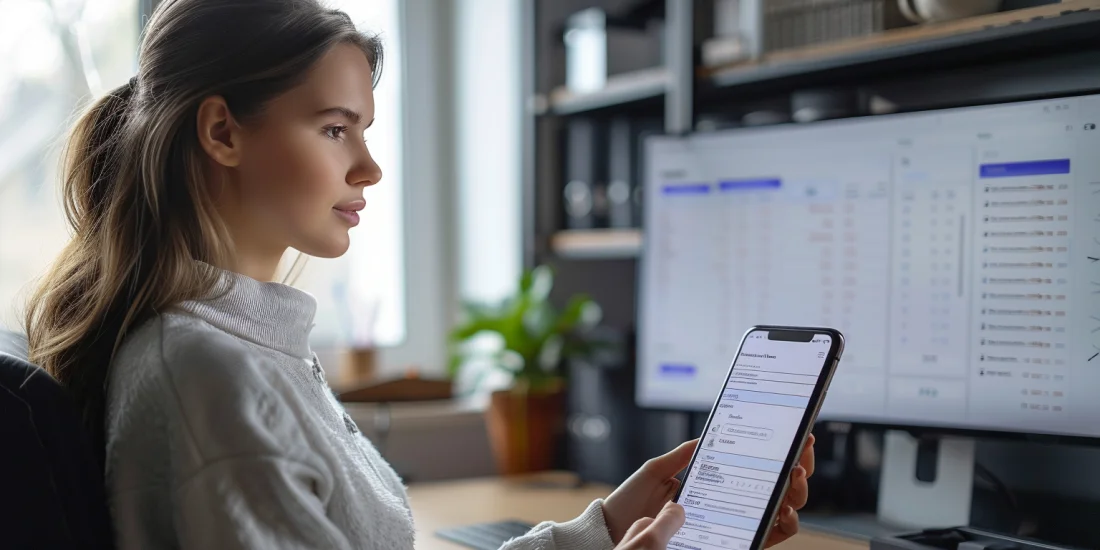Selecting the best app for making appointments can streamline your daily schedule and enhance productivity. With numerous options available, finding an app that meets all your needs can be challenging. A top-notch appointment app should offer a user-friendly interface, seamless integration with other tools, compatibility across devices, and robust customization options. These features ensure that you can manage appointments efficiently, whether for personal use or business purposes. By c
To determine the best app for making appointments, consider the critical features that enhance usability and productivity. A user-friendly interface is paramount for easy navigation and quick appointment setting. Integration with other tools, such as email and calendar applications, is essential for a unified workflow. Additionally, the app should work seamlessly across different devices, ensuring that you can access your schedule anytime, anywhere. Customization options allow you to tailor the app to your specific needs, making it an invaluable tool for managing appointments.
When selecting an appointment app, it’s also important to consider additional features that can boost productivity. Task management, reminders, and collaboration capabilities can significantly enhance your scheduling process. These features help you stay on top of your commitments and improve overall efficiency. With the right app, managing appointments becomes a hassle-free experience, allowing you to concentrate on your essential activities.
User-Friendly Interface
A user-friendly interface is crucial for any appointment app. Firstly, it simplifies navigation, making it easy to schedule, edit, and view appointments. An intuitive design saves time by reducing the learning curve, allowing users to become proficient quickly. Additionally, a clean and organized interface minimizes the chances of errors, such as double-booking or overlooking appointments. This level of usability is especially important for users with busy schedules who need to manage their time effectively.
Secondly, a user-friendly interface enhances accessibility. Users can quickly access their schedules without spending extra time figuring out how to operate the app. This convenience is particularly beneficial for individuals who frequently switch between devices. Whether on a smartphone, tablet, or desktop, a consistent and straightforward interface ensures that users can manage their appointments seamlessly across all platforms.
Moreover, an easy-to-navigate interface improves the overall user experience. It creates a positive impression, encouraging users to continue using the app regularly. This regular usage translates into better organization and time management. The ease of use also reduces frustration, making the process of scheduling appointments more enjoyable and less stressful.
Compatibility Across Devices
Compatibility across multiple devices is another essential feature for appointment apps. Firstly, it ensures that users can access their schedules from any device, whether a smartphone, tablet, or computer. This flexibility is vital in today’s fast-paced environment, where individuals often switch between different devices throughout the day. By having a consistent experience across all devices, users can manage their appointments efficiently, regardless of their location.
Secondly, device compatibility enhances synchronization. Changes made on one device automatically update on all others, ensuring that users have the most current information at all times. This real-time synchronization prevents scheduling conflicts and ensures that all appointments are accurately reflected across all platforms. It eliminates the need for manual updates, saving time and reducing the risk of errors.
Moreover, compatibility across devices supports remote work and collaboration. Team members can access and update shared schedules from their respective devices, improving coordination and communication. This feature is particularly beneficial for businesses with remote or traveling employees, ensuring that everyone stays on the same page regarding appointments and meetings.
Integration with Other Tools
Integration with other tools significantly boosts the efficiency of appointment apps. Firstly, it allows users to sync their appointment schedules with calendars, emails, and task management tools. This integration creates a centralized hub for managing all time-related activities, reducing the need to switch between different apps. It streamlines the scheduling process, ensuring that all relevant information is in one place.
Secondly, integration with communication platforms enhances collaboration. Users can send appointment details and reminders directly through integrated messaging apps, improving coordination among team members or clients. This seamless communication helps avoid missed appointments and ensures that everyone involved is informed and prepared. Additionally, integration with project management tools allows for better planning and tracking of tasks related to scheduled appointments.
Moreover, integrating with productivity tools can automate routine tasks. For instance, automated reminders and notifications can be set up to alert users of upcoming appointments. This automation reduces the risk of forgetting important meetings and helps users stay organized. Overall, integration with other tools enhances the functionality of appointment apps, making them indispensable for effective time management.
Customization Options
Customization options are vital for personalizing appointment apps to suit individual preferences and needs. Firstly, customizable layouts allow users to choose how their appointments are displayed, whether in daily, weekly, or monthly views. This flexibility enables users to organize their schedules in the most convenient way. Additionally, color-coding options help differentiate between various types of appointments, making it easier to prioritize and manage time effectively.
Secondly, the ability to create custom categories improves organization. Users can group similar appointments under specific categories, such as work, personal, or medical. This categorization simplifies the process of finding and managing related appointments. It also allows for better tracking of time spent on different activities, providing insights into productivity and time allocation.
Moreover, customization enhances the overall user experience. Users can tailor the app’s appearance and functionality to match their preferences, making it more enjoyable to use. This personalization increases engagement and encourages regular use of the app. By offering a range of customization options, appointment apps can cater to diverse user needs and enhance overall efficiency.
Key Takeaways
– A user-friendly interface simplifies navigation and enhances accessibility, saving time and reducing errors.
– Compatibility across devices ensures seamless access and synchronization, supporting remote work and collaboration.
– Integration with other tools centralizes scheduling, improves communication, and automates routine tasks.
– Customization options allow users to personalize the app to their needs, enhancing organization and user experience.
– Overall, these features ensure efficient time management and boost productivity in managing appointments.



